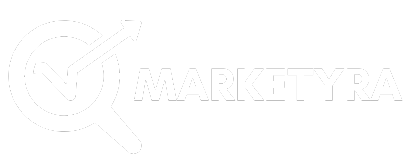On this page you will read detailed information about Schema Markup.
In the ever-evolving landscape of digital marketing, staying ahead of the curve is paramount. You may have already mastered the basics of search engine optimization, but have you explored the untapped potential of schema markup? This advanced tool can transform the way search engines interpret and display your website’s content, ultimately boosting your online visibility. Schema markup is not merely a buzzword; it is a strategic asset that enables you to present your content more effectively and improve your search engine rankings. Dive into this exploration of schema markup and discover how it can become a cornerstone of your SEO strategy.
Understanding Schema Markup: A Beginner’s Guide
What is Schema Markup?
At its core, Schema Markup is a form of microdata that you can add to your website’s HTML to enhance how search engines read and represent your page in search results. This markup allows you to create rich snippets, which are enhanced descriptions that appear in search results, giving users a glance at your content’s context before they click through. By providing this additional layer of information, Schema Markup helps search engines understand the nuances of your content, leading to more accurate and attractive search listings.
The Importance of Schema Markup
Incorporating Schema Markup into your website is a strategic move for improving SEO. Search engines like Google, Bing, and Yahoo can present your web pages more effectively, increasing the likelihood of drawing users’ attention. When your content is presented with rich snippets, it not only stands out visually but also conveys trust and authority, potentially leading to higher click-through rates. Additionally, by using Schema Markup, you ensure that search engines can better interpret your site’s content, which can ultimately improve your site’s ranking on search engine results pages (SERPs).
How to Implement Schema Markup
Starting with Schema Markup might seem daunting, but it’s simpler than it appears. First, identify the types of content on your website that can benefit from additional context—this could include articles, products, events, or reviews. Utilize online tools or plugins that generate the necessary markup for these content types, and insert this code into the HTML of your website. Regularly updating and expanding your Schema Markup will keep your site optimized and relevant in a continually evolving digital environment.
The Role of Schema Markup in SEO
Enhancing Search Visibility
Schema Markup plays a pivotal role in enhancing your website’s search visibility. By providing search engines with a more detailed and structured understanding of your content, it enables them to present your information in a more attractive and informative way. This could manifest as rich snippets, which often include additional details like reviews, ratings, prices, and more. These snippets not only make your link stand out on the results page but also provide users with valuable context, potentially increasing click-through rates and driving more organic traffic to your site.
Improving Content Relevance
In the competitive arena of search engine optimization, the relevance of content is paramount. Schema Markup helps by clarifying the context of your content to search engines, ensuring that it aligns with user queries. By implementing structured data, you ensure that search engines can accurately interpret and categorize your content, improving the likelihood of appearing in relevant search results. This tailored approach can significantly enhance your site’s SEO performance by making your content more discoverable and pertinent to user needs.
Facilitating Better Indexing
A well-structured Schema Markup facilitates more efficient crawling and indexing by search engines. Since these engines can readily identify the key components of your page, they can index your content more effectively. This not only speeds up the time it takes for new content to be recognized by search engines but also ensures that it is indexed in a way that accurately reflects its purpose and content. Ultimately, this leads to improved search rankings and greater exposure in relevant search results.
In conclusion, Schema Markup is not just an optional enhancement but a crucial tool in your SEO strategy. By leveraging this powerful feature, you position your website for better visibility, improved relevance, and more effective indexing, all of which contribute to enhanced search engine performance.
How to Implement Schema Markup on Your Website
Understanding the Basics
Implementing Schema Markup on your website can significantly enhance your SEO strategy by improving search engine understanding of your site content. Schema Markup is a form of microdata that, when added to a webpage, creates an enhanced description (commonly known as a rich snippet) that appears in search results.
Before diving into the implementation process, it’s essential to familiarize yourself with the types of schema available. From articles and events to products and reviews, each schema category serves a distinct purpose. Knowing which type suits your content best is crucial to leveraging its full potential.
Setting Up Schema Markup
To begin implementing Schema Markup, you should first identify the key pages on your website that would benefit most from enhanced visibility and better click-through rates. Typically, these include product pages, reviews, or any content that can be richly described.
- Choose the Right Tool: Use the Google Structured Data Markup Helper or a plugin like Yoast SEO if you’re using a CMS like WordPress. These tools simplify the process by generating the necessary code.
- Insert the Code: Manually add the generated markup into the HTML of your website, or integrate it through your CMS. Ensure the code is placed in the appropriate sections to accurately reflect the content.
Testing and Validation
Once your Schema Markup is implemented, testing is paramount. Utilize Google’s Structured Data Testing Tool to confirm that your markup is correctly deployed and error-free. This step ensures the markup is fully functional and interpretable by search engines, maximizing your SEO benefits.
By methodically implementing and testing Schema Markup, you can enhance your website’s visibility and provide search engines with detailed content insights, ultimately improving your SEO performance.
Common Types of Schema Markup for Enhanced SEO
Organization Schema Markup
Organization Schema Markup is a foundational type of structured data that helps search engines understand the key details about your company or organization. By incorporating this markup, you can provide search engines with essential information such as the name, address, contact number, and official logo of your organization. This not only improves your visibility in search results but also enhances your brand presence. When search engines display this information, users gain confidence and are more likely to engage with your content.
Product Schema Markup
For e-commerce websites or any site that sells products, Product Schema Markup is indispensable. This type of markup presents product details like pricing, availability, and customer ratings directly in the search results. Implementing Product Schema Markup can significantly increase click-through rates by providing potential customers with the information they require upfront. This clear visibility and easy access to product details can drive more targeted traffic to your site, potentially boosting sales.
FAQ Schema Markup
FAQ Schema Markup is increasingly popular due to its ability to address common user queries directly within the search results. By using this markup, you can enhance content that answers frequently asked questions, thus improving the chances of your site appearing as a featured snippet. This not only positions your website as an authority on the topic but also enhances user experience by delivering quick, relevant answers. FAQ Schema is particularly beneficial for sites offering services, complex products, or educational content.
Incorporating these common types of Schema Markup into your website’s SEO strategy can significantly improve your visibility and attract more organic traffic. Understanding and utilizing these markups effectively can ultimately lead to better engagement and higher conversion rates.
In the previous post, we had shared information about Optimize Images for SEO: Steps to Boost Your Website Ranking, so read that post also.
Measuring the Impact of Schema Markup on Your Website Performance
Understanding Key Metrics
To effectively measure the impact of Schema Markup on your website’s performance, it’s essential to identify key metrics that provide insight into your SEO success. Organic search traffic is one of the primary indicators. An increase in organic traffic often signals that search engines better understand your content due to the structured data provided by Schema Markup. Additionally, monitor your click-through rates (CTR). Enhanced search results, such as rich snippets, typically result in higher CTRs, as they provide more detailed information directly on the search engine results page (SERP).
Utilizing Analytical Tools
Incorporating analytical tools can further refine your understanding of Schema Markup’s effectiveness. Google’s Search Console is invaluable, allowing you to track your site’s performance and see how Schema Markup affects search visibility. By examining metrics such as impressions, clicks, and average position, you gain a comprehensive view of your site’s search presence. Moreover, tools like Google Analytics can help you evaluate user behavior and engagement metrics, identifying any changes post-schema implementation.
Evaluating Long-term Benefits
While the immediate effects of Schema Markup can be significant, it’s crucial to consider its long-term benefits on your website’s SEO. Enhanced search visibility often leads to increased brand authority and user trust, as users are more likely to engage with sites that provide clear and concise information. Over time, this can result in improved conversion rates and a stronger overall online presence. Regularly updating and auditing your schema markup ensures sustained benefits and adaptability to search engine algorithm changes.
In conclusion, by focusing on these aspects and employing the right tools, you can effectively measure the positive impact of Schema Markup on your website’s performance, driving both short-term gains and long-term success.
Conclusion
In the ever-evolving landscape of digital marketing, mastering schema markup is crucial for staying ahead. By implementing schema markup on your website, you enhance its visibility and usability, ensuring search engines understand and display your content effectively. This not only boosts your SEO but also enriches user experience by providing relevant information in search results. As you continue to refine your digital strategy, embracing schema markup positions your website for greater success. Empower yourself with this tool, transforming your site from merely functional to dynamically engaging, and watch as it opens new avenues for growth and engagement in the digital realm.
Disclaimer
The content published on the Marketyra blog is for educational and informational purposes only. While we strive to share accurate and up-to-date digital marketing tips, strategies, and trends, we do not guarantee any specific results. Readers are advised to use their own judgment before applying any tips or advice provided. Marketyra is not liable for any losses, damages, or issues arising from the use of blog content.
So friends, today we talked about Schema Markup, hope you liked our post.
If you liked the information about Schema Markup, then definitely share this article with your friends.
👉 Need help with SEO or digital marketing services?
Feel free to call us at 📞 +91-9306925861, email us at 📧 admin@marketyra.com to get in touch!






